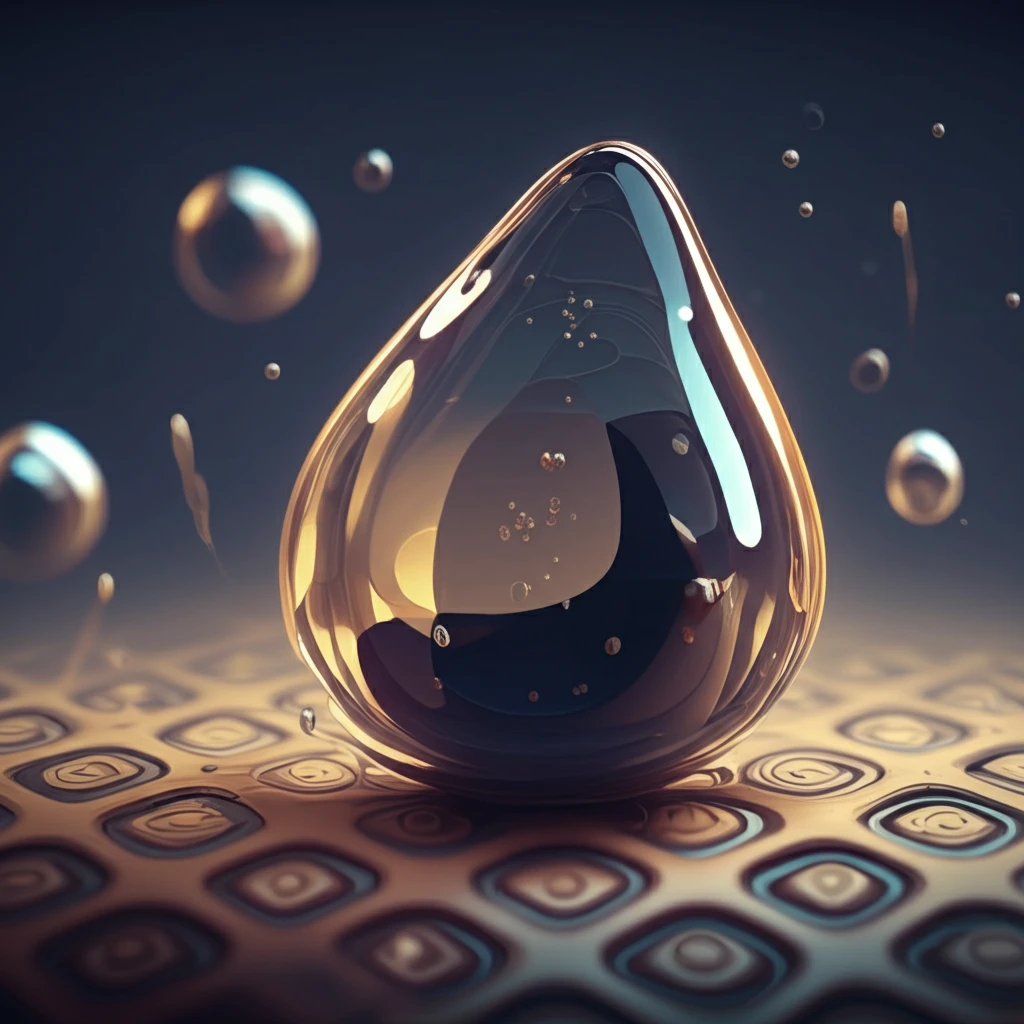
The Water's Edge: How Membrane Properties Shape Contact Angle and Why It Matters
"Unveiling the connection between membrane characteristics and contact angle for better material design"
In the realm of material science, the contact angle holds significant sway, especially when it comes to membranes. This angle, formed where a liquid meets a solid surface, isn't just a visual curiosity; it's a vital indicator of a membrane's hydrophilicity—its affinity for water—and how prone it is to fouling, the undesirable accumulation of deposits that can hamper performance.
Scientists have long sought ways to predict this angle, employing methods like interfacial tension calculations and thermodynamic modeling. However, these approaches often demand detailed knowledge of a material's properties, information that may be scarce, especially for cutting-edge materials. Recent studies suggest that fundamental membrane characteristics, such as pure water permeation (PWP), porosity, and pore size, also influence the contact angle. But how exactly do these factors stack up against each other?
New research aims to rank the impact of PWP, pore size, and porosity on a membrane's contact angle. By understanding these relationships, researchers hope to develop models that can estimate contact angle based on easily accessible membrane properties, paving the way for the design of more efficient and durable materials.
Decoding Membrane Properties: What Affects the Angle?

The study focuses on polyethersulfone (PES) membranes, a popular choice in various applications due to their robustness and chemical resistance. Data from approximately 90 different PES membranes were gathered from existing research, encompassing a range of PWP values, pore sizes, porosities, and contact angles. These data points were then subjected to rigorous analysis using ANOVA (analysis of variance) and Taguchi methods, statistical techniques designed to tease out the relative importance of each factor.
- Porosity: Ranges from 0.112 to 0.879
- PWP (Pure Water Permeation): From 3.30 L/m²h to over 198.00 L/m²h
- Pore Size: From 1.07 nm to over 50.00 nm
The Verdict: Which Property Reigns Supreme?
The analyses revealed that porosity and pore size exert a more significant influence on the contact angle than PWP. This suggests that the surface characteristics of the membrane play a dominant role in determining how water interacts with the material. While PWP is still an important factor, as it indirectly reflects the membrane's hydrophilicity, porosity and pore size appear to be the primary drivers of contact angle behavior. These findings pave the way for the development of more accurate models for predicting contact angle based on fundamental membrane properties, accelerating the design and optimization of advanced membrane materials.
